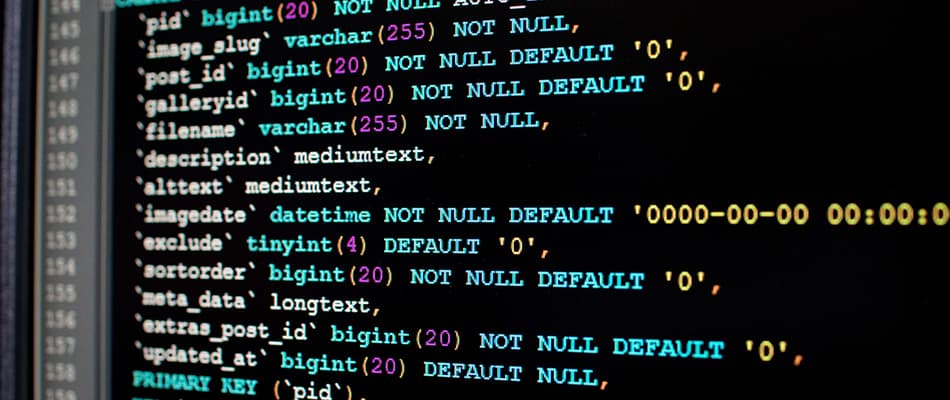What is Design Process in Graphic Design? Explore its Core Components, Importance and Impact Here!
The design process is an integral part of graphic design. It helps designers stay organised and focused on creating great visuals. The process starts with understanding the problem and then moves through steps like brainstorming, prototyping, and testing. This method ensures that designers come up with the best ideas and solutions. Whether you’re new to graphic design or have experience, knowing what is design process in graphic design can help you create more effective and creative designs.
This article will explore the design process’s main components, steps, importance, and impact on graphic design.
What is Design Process in Graphic Design?
If you wonder what is design process in graphic design and what it involves, then you must know that the design process is a straightforward method that helps designers solve problems and create new ideas. It starts with defining the problem and doing research to gather helpful information. It is the process of brainstorming ideas and making simple models or sketches called prototypes. These prototypes are tested to find what works and what needs changes. Designers use feedback to make improvements until the final design is ready. This process helps them stay organised, think creatively, and improve their designs at each step. It ensures they find the best solution and create compelling, well-thought-out designs that meet project needs and solve the problem correctly.
Core Components of the Design Process
While understanding what is design process in graphic design, it is important to know its core components as well. These elements help designers stay organised, creative, and focused on user needs. By knowing these components, designers can ensure that each stage of their work is effective and leads to the best results.
Here are the components that make a design process strong and successful:
- User Research – Designers learn about users’ needs, preferences, and problems. This helps them create solutions that meet user expectations and solve real issues.
- Creativity and Ideation – In this step, designers and their team share ideas to find the best solutions. Working together helps create unique and useful designs.
- Prototyping – Designers make simple models or drafts of their ideas. Prototypes help them see how ideas work and find any issues early.
- Feedback and Testing – Designers get input from users and test their designs. This helps them see what works and make improvements based on feedback.
- Iterative Improvement – Designers make changes and updates based on testing and feedback. This helps improve the design step by step.
- Communication – Clear communication between team members and stakeholders is essential. It helps everyone understand the design goals and keeps the project on track.
Importance of Design Process in Designs
Understanding what is design process in graphic design is essential for creating strong and practical visuals. It provides a clear path, guiding designers through their work. By following this process, designers can turn ideas into useful solutions. This approach helps them stay organised, solve problems more efficiently, and continuously improve their designs. Knowing the design process allows designers to create work that meets both client needs and user expectations, leading to successful outcomes.
Below are the reasons why the design process is essential:
- Organised Workflow – The design process helps designers stay organised and manage their time better. By clearly defining each step, it makes projects run smoothly and reduces stress.
- Clear Problem Solving – The process starts by defining the problem, followed by research and testing. This helps designers find and fix problems early, making solutions easier to create.
- Creative Idea Generation – The design process encourages creativity by brainstorming and testing ideas. It helps designers develop new solutions and choose the best ones.
- Improved Team Collaboration – Clear steps make teamwork easier. Everyone understands their role and the project’s progress, which improves communication and keeps everything on track.
- Better Final Outcomes – Following the design process helps improve the final result. It ensures the design meets user needs and leads to high-quality outcomes.
What are the steps involved in a design process?
The graphic design process involves steps that help designers solve problems and create practical solutions. Each step serves a purpose, ensuring the work stays organised and leads to better results. By following these steps, designers can explore new ideas, test their designs, and make improvements, ensuring the final design meets user needs and expectations. Understanding what is design process in graphic design allows designers to create well-structured and successful designs.
Here are the five steps that are involved in a design process:
- Empathise – Designers begin by learning what users need and their problems. They watch and talk to users to understand them better. This step helps designers create solutions that solve real user problems and improve their experience.
- Define – Next, designers clearly state the main problem they need to solve. They organise the information they gathered in the empathy step. This clear definition helps guide the rest of the process and keeps the project focused.
- Ideate – In this step, designers brainstorm and come up with as many ideas as they can. They explore different solutions without judging or limiting their thoughts. This helps them find new and creative ideas to try out.
- Prototype – Designers make simple models or drafts of their ideas. These can be quick sketches or basic digital versions. Prototypes help designers see how their ideas might work and show what needs fixing before making the final design.
- Test – Designers test their prototypes with users and get feedback. This step shows what works well and what needs to be improved. Designers use this feedback to make changes until the design meets user needs and works as expected.
Impact of Design on Graphic Design
The design process shapes how people see and interact with visuals. Once you understand what is design process in graphic design, it’s good to know that it influences the impact of any design. Good design can share ideas, create feelings, and make a brand stand out. Understanding how design affects graphic design helps designers create strong and practical work.
Below are the ways how design impacts graphic design:
Enhances Visual Communication
The design process helps graphic design share messages. Good design uses colours, fonts, and layouts in smart ways so people can understand information quickly. Designers who follow a structured process create visuals that make complex ideas easy to grasp. Understanding what is design process in graphic design helps designers communicate effectively with their audience and strengthen the overall design.
Builds Stronger Brand Identity
Design shapes how people see a brand. Using the design process, designers create logos, colours, and images that show what the brand stands for. This helps build a brand identity that people know and trust. A well-planned design process ensures all parts of the design work well together, making the brand stand out and be remembered.
Creates Emotional Connections
The design process helps make graphic design more engaging by adding emotion. Designers use images and colours that can create feelings like happiness or trust. This connection keeps people interested and helps them relate to the design. When people feel connected, they remember the design better and are more likely to take action.
Improves User Experience
The design process ensures that graphic design is easy and enjoyable. Designers consider how people use their work, like a website or app, and test different options to find the best. This makes designs more effortless to use and understand. Good design looks nice and works well for the people using it.
Increases Engagement and Attention
A good design process helps create designs that grab attention and interest people. Designers use size, colour, and layout to make their work stand out. This keeps people engaged longer and makes them more likely to respond to the message.
Learn Graphic Design with Digital Regenesys
If you are keen to learn what is design process in graphic design, enrolling in a design course can be a good option. Learning graphic design with Digital Regenesys is an excellent choice for anyone who wants to build relevant skills and gain real experience. The UI/UX and Graphic Design Course with GenAI at Digital Regenesys teaches design basics, user experience, and how to use the best design tools. By joining this course, learners can improve their creative and technical skills to make solid, user-friendly designs. With expert-led lessons, hands-on projects, and a supportive learning environment, students can build a suitable design portfolio and prepare for the job sector.
Here are the advantages of enrolling in a graphic design course at Digital Regenesys:
- Expert Training – Learn from skilled faculty who teach industry-relevant knowledge and skills. This makes it easy to understand and apply what you learn.
- Hands-On Learning – Work on real design projects to get practical experience. This helps you build a strong portfolio for job applications.
- Flexible Learning – Study online at your own pace. This lets you fit learning into your schedule and balance it with other activities.
- Up-to-date Curriculum -The course covers the latest tools and trends in UI design, ensuring you stay relevant in the field.
We hope this article helped explain what is design process in graphic design and why it’s essential for creating clear and engaging visuals. By following each step, from research to testing, designers can solve problems, generate creative ideas, and refine their work to meet user needs. This process leads to better designs and successful projects. To learn these skills, you can join the UI/UX and Graphic Design Course with Gen AI at Digital Regenesys for expert guidance and hands-on experience.
FAQ: What is Design Process in Graphic Design?
What is design process in graphic design?
This step-by-step method helps designers solve problems and create good visuals. It includes defining the problem, researching, brainstorming, prototyping, and testing.
Why is the design process necessary in graphic design?
Understanding what is design process in graphic design helps designers stay organised, think creatively, and make better, user-focused designs.
What are the core components of the design process?
The main components are user research, creativity and imagination, prototyping, feedback and testing, iterative improvement, and communication.
How does the design process impact graphic design?
It helps designs communicate, build a strong brand identity, create emotional connections, and improve user experience.
What steps are involved in the design process?
The steps are empathising with users, defining the problem, brainstorming ideas, creating prototypes, and testing with feedback.
Recommended Posts













